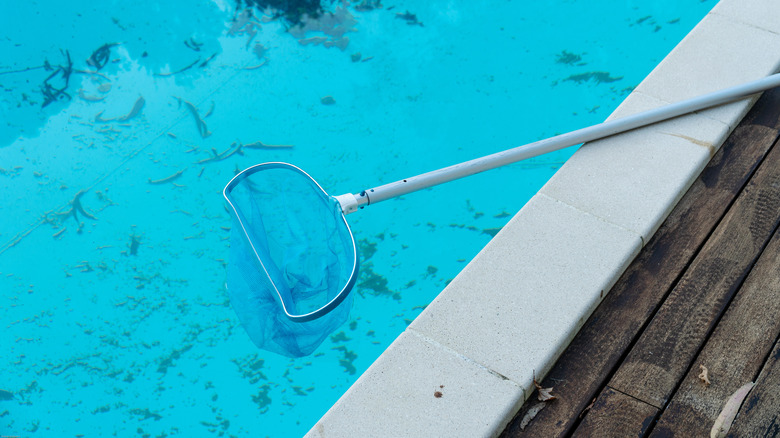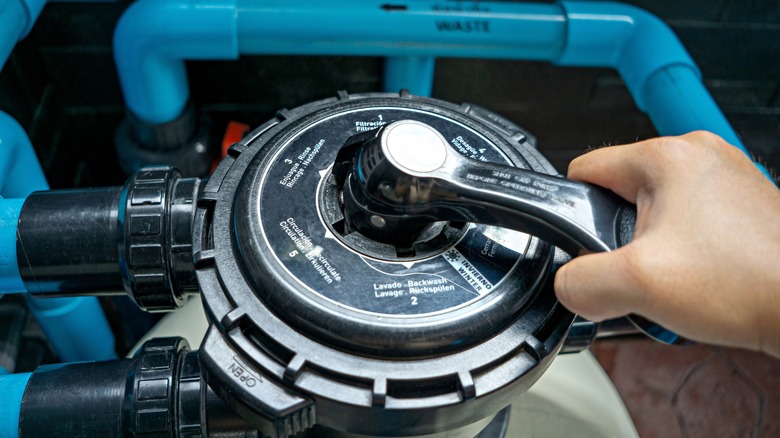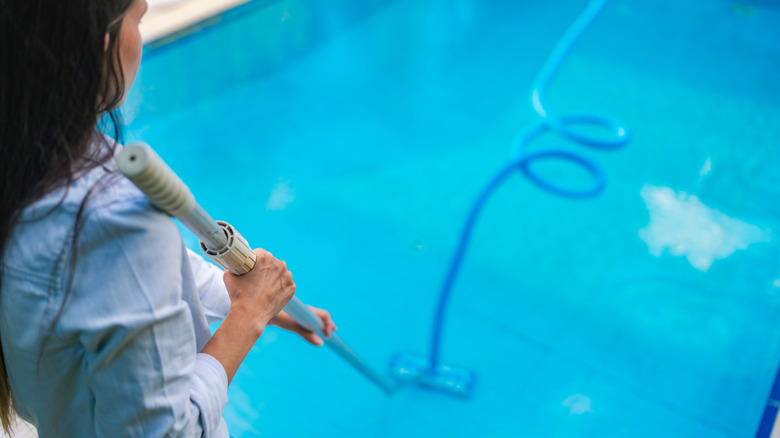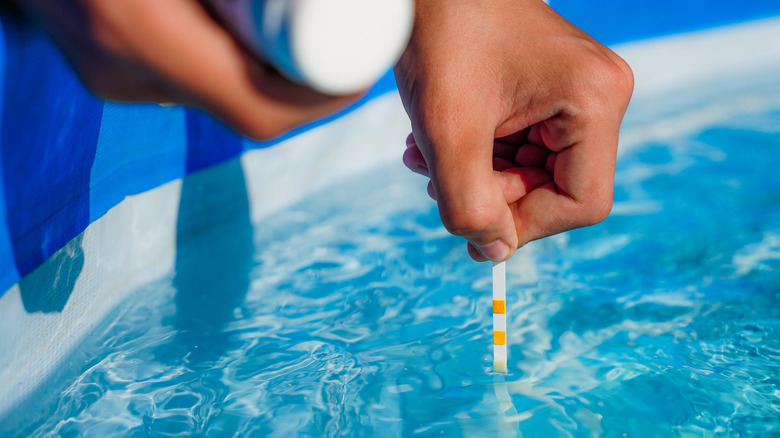The Best Method For Cleaning Dead Algae Out Of Your Pool
Pools and algae go together like air and dust: there's no way to separate them from each other, which can be a real issue for pool owners. The best method for cleaning dead algae out of your pool requires a pool vacuum and multiport system; however, if you don't have the multiport valve, there is another effective method that can help. But before we begin, let's try to understand what dead algae is and why it is in your pool in the first place.
First, before it is dead, algae comes in a variety of different colors and four broad categories. Category one is black algae, category two is green algae, category three is pink algae, and category four is yellow algae. Almost any soil or plant debris contains algae. It's so light and ready to move that a breeze can carry it right into your pool and sometimes even on your swimwear.
Algae dies after completing a shock treatment to your pool, and you know it's dead once it sits at the bottom of your pool. It's like a white, gray, or brown dirt-like substance that you can't easily pick up. Despite its harmless presence, dead algae can make an honest, clean, and clear pool look a little untrustworthy, especially if left unchecked. This can pose a serious pool problem, and as a pool owner, you may be wondering –- what is the best method to get rid of dead algae?
The best method with a multiport valve
The ideal method for eliminating algae requires a multiport valve. A multiport valve allows water to be routed in multiple directions, giving you different maintenance options whenever necessary. In this case, you will need a "bypass" setting that diverts the water from the pool and sends it out of the backwash hose without passing through the filter. To begin, turn off your pump and set your valve to the "waste" or the "drain" setting.
Now turn the pump back on and start vacuuming. When trying to remove algae, it's important that your vacuum head moves slowly along the bottom of the pool. Be thorough in algae growth areas; you want to ensure you get all of it. As you may know, the water from your pool will be pumped out quickly, so try to act fast. However, you can always buy yourself some more time if you turn on your water hose and fill up your pool while doing this.
Once you're out of time, you will hear the skimmer begin to cough a bit and suck in air. At this point, stop. If you haven't finished the job yet, turn off the pump, refill the pool, and repeat the process. If you have removed all the algae, then your job is complete. Shut off the pump, set the valve back to "filter," proceed to refill the pool, and follow the aftercare steps mentioned ahead.
How to clean algae without a multiport valve
Now, for those without a multivalve, this other method is effective but complicated because, without a multivalve, you will not be able to redirect the waste directly out of your pool. Instead, it must go through the filter first. This will be particularly troublesome as you will notice whatever you're sucking up is blowing back into your pool after some point, and that will not help your problem.
To begin this process, get your pool vacuum ready, whether it's a manual vacuum or a robotic one, set it through your filter, and start targeting the algae. Once you see that filter acting up, it's time to pause and check up on it. Bang it out, clean it, and do whatever it takes to return the cartridge back to its clear state. You'll want to get good at this part as you will need to do it more than once. Be patient.
Note, with this method, if you could not finish this process due to your filter constantly acting up, contact a professional. They will certainly be able to help. For others, once all the algae is gone and you feel like your work is complete, throw out your filter cartridge and replace it.
Congratulations! Your pool is algae-free ... but not forever. Algae always has its way of sneaking back in if we don't fix the problem entirely.
How to maintain an algae-free swimming pool
After removing the dead algae, maintaining the cleanliness of your pool is crucial. It all starts with a clean filter. To ensure this at all times, backwash or manually clean it before the filter turns into something problematic for the entire pool. Once that is complete, prevention is the next step and always the best solution for anything unwanted. That's why adding a quality algaecide to the water will indeed help. Algaecide kills any remaining algae and prevents future growth, but it must be left to circulate for about 24 hours. Also, important to note: algaecide is not a replacement for chlorine! In addition to this chemical reinforcement, your best bet at prevention is always proper treatment, attention, and care for your pool. That means regular pool checks for pH and chlorine levels and routine vacuuming and backwashing of the filter system.
All of these tips will help prevent algae from growing back, saving you more time and energy to enjoy your pool. Remember, preventing algae growth is easier than cleaning a pool filled with dead algae. With consistent care and the right tools, you can keep your pool crystal clear all summer long. It is indisputable the best method for cleaning dead algae out of your pool involves vacuuming, backwashing, algaecide, and regular maintenance. These steps can keep your pool algae-free and ready for fun in the sun.



